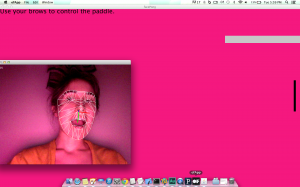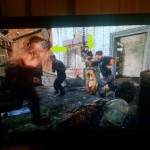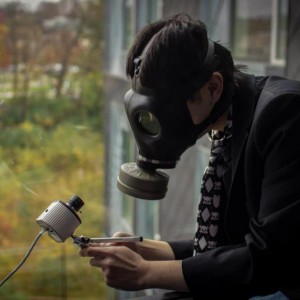I sought to simulate economic hardships and play Skyrim in a manner that crosses realistic, difficult, and unfun. However, I eventually realized that simulation and realism are neither realistically feasible nor desirable, despite the efforts of Bethesda and Rockstar to create an environment that feels truly lived in. This is a demonstration of why such goals are do not work within game systems.
Student Area
Nivetha – Jones on the Fast Lane
My video and most my description is here.
I ended up playing Jones on the Fast Lane wrong and uncovered a few things which I highlight in my video. Mainly though, I realized….
1. You literally do not need to ever pay rent
2. You can go to class naked
3.If you are naked, you will get money for relative who feel sorry for you.
Subversive Play: Take a Breath
Even in some of the most brutal games, it is possible to find beautifully created spaces. If you take a moment to look around after the game has stopped pushing you to the next event, you can find pockets of space where the action comes to a stop. In these spaces, you can pause, take a breath, and spend a few minutes enjoying the peace.
I spent some time finding some of the more serene locations in some of my favorite video games including Saints Row IV, Dishonored, and Bioshock.
subversive play – tetris
I misplayed tetris in two parts.
1) Cinematic viewing of tetris: I would watch the tetris blocks from various versions of the game fall down until the game “ends.”
2) Drawing in tetoris (provided to me by Paolo), the most inefficient and unfun tetris game ever.
The process for both were incredibly boring. I was so used to tetris being fast-paced that waiting for the blocks to fall down or trying to assemble them in an aesthetic way was tedious. But the goal was to completely go against the scoring system of tetris (erasing lines), which encourages an efficient playstyle, and I’ve succeeded on that account (score of 0 + completely inefficient way of playing tetris).
Subversive Play – Lego

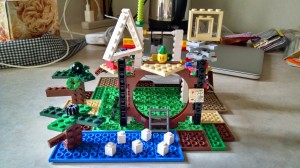
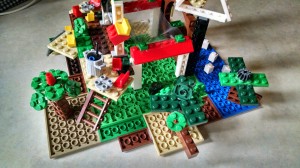
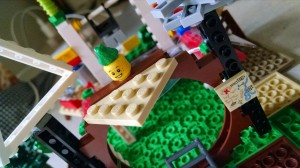
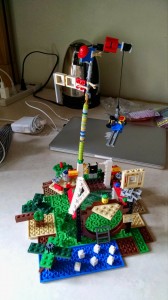
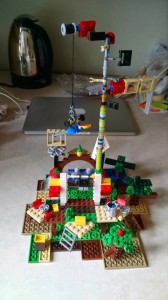


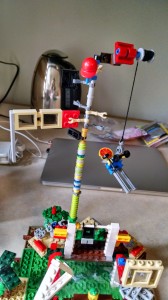
Lego has been a staple of almost everybody’s childhood. The popular toy bricks are founded upon the idea that anything that can be created and assembled can and should be taken apart again to be reinvented as something different and new. With a few simple building blocks and a lot of imagination, anything is possible! Lego has several defining qualities that make it the ubiquitous and beloved toy it is today: it encourages creativity, promotes hands on learning, and inspires curiosity and a desire to solve problems. It is also perhaps the single most reusable toy in the world. A+ investment for parents.
Lego sets usually come with an instruction manual of some sort with simple Ikea-like diagrammatic directions. My set (Lego 31010 – Treehouse) came with 3 booklets. While the pieces are specifically tailored to the construction of these featured structures, at the end of the day, they are only a suggestion. The point of having a pile of diversely colored and shaped pieces is to tinker with them and to discover for yourself what kinds of cool models you can build, and build, and build…
My subversive play mission was pretty simple: to use lego bricks in all the wrong ways. I wanted to make my lego set as un-reusable and as permanent as possible. I wanted to stifle this spirit of re-creation (as well as recreation). My materials: Legos, Krazy glue, hands, and no plan in mind (also a little bit of acetone and some q-tips). I super glued everything that could be glued in every direction and at every angle I could think of, shoved pieces into other pieces that weren’t supposed to fit together, flipped things sideways and upside down, and even incorporated a cut out section of a Ziploc bag just because I could (I felt like I was breaking a sacred unspoken rule by introducing non-lego or non-lego prescribed materials into my model… I also broke the no gluing legos rule, the other sacred though frequently vocalized rule*). I created my own rules: once glued and secured, no more changing allowed / have no mental visualization of an end product – just stick random stuff together and go with the flow / no attaching things that look like they’re supposed to go together.
Misplaying legos is actually harder than it appears. Nothing just fits anymore. Attaching objects is a pain. Everything sucks. Gluing pieces together at wonky, messy angles and then ripping apart the crappily glued parts and seeing the residual damage… it hurts your soul. I kept questioning what I was doing and why I was purposely making haphazard arrangements out of perfect, synergistically designed pieces. At many points, I found myself desperately clicking bricks together the way they were meant to fit together, but then immediately berating myself for “cheating” (for following the rules).
By building something out of legos in this way, I didn’t get to experience the parts of playing with legos that make it fun. I had no clear goal to achieve, besides making something, anything. There was no problem to solve. I was just doing things at random. There was no structure to my building. I couldn’t try again – once I had glued something, I had to live with it. All in all, it was not a satisfying experience. I also wince at the fact that I spent $29.99 on a set that I will never get to rebuild. 0/10 would not recommend.
*Some impassioned comments I saw from googling variations of “how to glue legos”… 
Michelle and Greg-Subversive Play
http://vimeo.com/104987286
If you’ve ever heard of the phrase “Hate the game, not the player,” our spin was to make it “Hate the player in the game.”
Our idea for subversive play was to transform frustrating multiplayer game experiences into something a little more gratifying. While playing a normal game (Mario Kart), we kept track of all those little negative experiences, creating a point system to quantify our anger. Then, using a simulation game, in this case The Sims, we recreated each other’s in-game avatars, and exacted our revenge on them in various ways for each of negative experiences: we cause them to have involuntary bladder accidents, get into fights, die in a cooking accident, drown, etc.
More information on Mario Kart:
Playing a game like Mario Kart can be frustrating. Thanks to the pseudo-random balancing element of items like red shells, blue shells, and the many comical obstacles, one can go from first place to last place, mere feet from the finish line on the last map. One of my friends even coined the term “nonsense zone”, a devilish area roughly from 4th to 7th place where you can be doing fine one second, and shot back the next. The mechanism is this: you have many players in front and behind you, all relatively close, who can throw bombs, bananas, fake item blocks, red shells, etc. any which way. It’s very easy to get hit, often with little to no time to react; even the best players are susceptible. Once you are hit, you become a sitting duck to be hit by any of the several people behind you again. All of this takes place over the course of a few seconds. In sum, you can be doing fine and then BOOM LAST PLACE.
To the cool-headed rational person, these are just parts of the game that you have to accept. Grit your teeth and bear it, so to speak. But what if you’re not cool-headed and rational? This is what we explore in our project.
The Pong Controlled Actor
For this project I was interested in using the game of pong to turn any player into a performer in a narrative. Using face tracking the player can control the paddle in a simple game of pong with the degree to which their eyebrows are raised, their mouth is open or both depending on the mode. The player knows the mode by an icon at the top of the screen.
The game is intended to be played in silence as others watch you play and listen to the audio of a narrative that you cannot hear. I also intend the game to be played in darkness with the only light coming from the brightly lit screen of a computer in front of the player.
This game presents the director/game designer with a limited but compelling set of narrative tools:
- A voice over or sound track
- the rough expression on the player’s face at predetermined times
- the color of the light reflected on their faces
I took these tools and made a short narrative of a mime preparing to attend yet another party. The following is my script:
[warmish reflected light]
THE PLAYER PERSPECTIVE: on screen it says “Press enter to begin” and then “put on the provided blue lipstick to aid in tracking, wait for calibration to finish, and press enter when complete.”
THE AUDIENCE PERSPECTIVE: voice over begins as the lipstick is being applied. “I was just getting ready for the ball, like any Saturday night. Us mines always get invited last minute, but we know to get ready regardless.”
THE PLAYER PERSPECTIVE: the player must open mouth widely to catch a slow moving ball at the top of the screen.
THE AUDIENCE PERSPECTIVE: “ I certainly was tired and didn’t want to got out but what can be done when something is one’s job.” (as the “mime” opens the mouth widely in a yawn like gesture.)
THE PLAYER PERSPECTIVE: raise eyebrows to catch the ball.
THE AUDIENCE PERSPECTIVE:“ I know how to look alert. When you can’t speak you have to look like you are full of energy”
[bright white light]
THE PLAYER PERSPECTIVE: Raise eyebrows slowly to catch the next ball.
THE AUDIENCE PERSPECTIVE:“ I only felt truly awake as I entered through the back way of the giant house into the brightly lit kitchen.”
[Flashy lights]
THE PLAYER PERSPECTIVE: Challenge mode where all modes are interchanged quickly as the screen flashes.
THE AUDIENCE PERSPECTIVE:“When I entered the cocktail party I immediately began my usual routine.” (fast and crazy faces with music)
[cool blue light]
THE PLAYER PERSPECTIVE: the screen gets blue an you have to scrunch up your face and then keep it neutral to catch the next ball. You are in dual eyebrow and mouth mode. then open your mouth slightly to catch last ball.
THE AUDIENCE PERSPECTIVE:“after an hour or so I slipped into the large study for my fifteen minute break. I felt strangely detached. I let out a little sound to remind myself I could speak.”
[Bright White Light]
THE PLAYER PERSPECTIVE: Raise eye brow and mouth midway.
THE AUDIENCE PERSPECTIVE:“then suddenly I realized that I wasn’t alone.”
This is a bit ambitious to program in the allotted amount of time, but I’ve got some of it working.
Subversive Play: Moral Support – Maryyann Landlord
The idea came to me while I was sitting on a bench in a hallway trying to think of what to do for this assignment. Time was ticking and I was desperate. I remember thinking, “I could really use some moral support or encouragement right now. I have no idea what I’m going to do”.
The notion of having predetermined roles for players in an MMO game is very fascinating to me. Each player picks a character and depending on the stats of that character, he/she create builds in the game that would best use utilize those abilities. The major roles in MMO games are DPS, Tank, Healer, and Support. Each role class plays an important part to the team so players must work together to win the game. The DPS carries out the most amount of the damage in the team; Tanks usually have large amounts of health and can take a lot of damage while inflicting damage; Healers aid the other players by healing them and supports help various other roles to clear waves of enemies.
Following this thought process, I decided to create my own new class called Moral Support for League of Legends. The role of the Moral Support would be to follow a character around and give him/her large amounts of moral support and encouragement. Before carrying out my destructive plan, I predicted that players would become extremely angry since they are essentially losing a player on their team. However, after several games, I noticed that the players actually were really happy with my role and even endorsed me after the games. I think it is both because they receive enough amount of hate from normal players and due to the fact that I stated out my role as Moral Support in the beginning of each game. This experiment actually makes me want to keep this account.
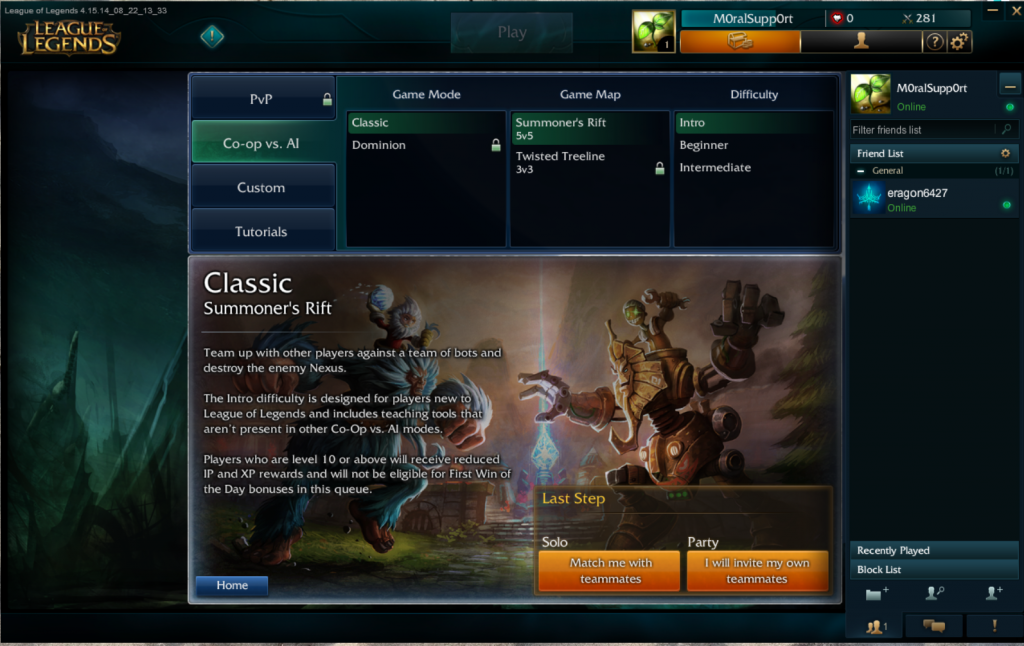
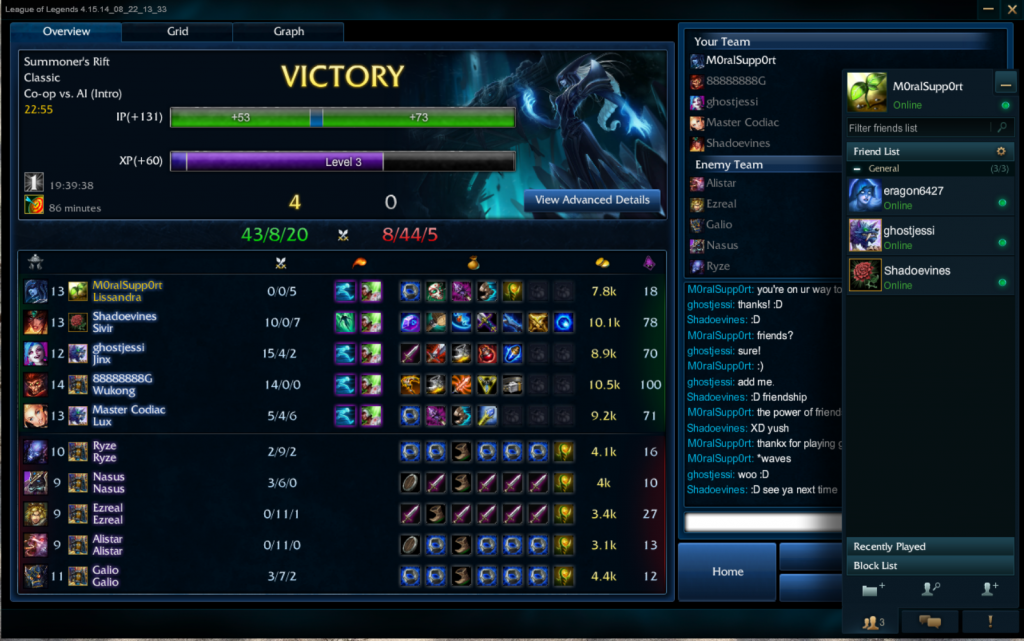
Subversive Play: tic tac to!
This is the documentation of my reinterpretation of the game ‘tic tac toe’ . In this game, the objective is to make the other person score tic tac toe instead of yourself. If you watch the games that we played you can see that it is actually much easier to win using these rules. Usually, the game comes to a stalemate without anyone winning. In this interpretation however, the game rarely closes in a draw and I find that this kept both players motivated to keep playing. It is also easier to come up with strategies for this game; for example, I found that if one was able to posses the side four spaces on the board that were not corners, it was easy to gain victory.
As we played the game more and more, we became faster at it (just like in normal tic tac to The thing that made it interested was that their seemed to be much more ways to avoid tic tac toe than to get it; instead of trying to win, the object of the game became about trying to corner the other player into losing. It became a bit more aggressive and to me, used the two-player aspect of the game better than the original game.
Overall, I enjoyed making this small change and it makes me wonder what other games we can enjoy by playing it with a different rule set.
Subversive Play – The Last of Us
For my project, I played The Last of Us, one of the most critically acclaimed games from 2013.
I misplayed the game by messing with its cinematic timing and its combat mechanics.
In the prologue of the game, I take on the role of a father carrying his daughter to safety amidst the beginning of a zombie apocalypse. I was supposed to carry her through the chaotic city, escaping the panicking crowd and advancing zombies. Instead, I took my time slowly enjoying the scenery. At this point, the game forces me to keep up with its predetermined cinematic pace by killing me with a zombie. Their will to do so is so strong, they programmed the zombie to jump straight through walls in order to eat me. They really want me dead.
http://www.youtube.com/watch?v=OM7GISsrfr4&list=UUxzqpMYxHHbTwyoc-zRJ1IQ
Sorry about camera being vertical…wasn’t thinking when I recorded this.
The second misplay I did is that during every single fight sequence, instead of being the macho protagonist I was intended to be, I would hide behind cover and let my female teammates, who had infinite health and ammo, take on the onslaught of our enemies.
I died a lot. It was significantly more difficult than if I just ran-and-gunned my way through. However, my teammates did come and save me when I am ganged up on, and would give me bandages after a battle. But it also takes them 2-3 minutes to defeat each opponent. They would also miss point blank gunshots. I felt pretty powerless during those moments, constantly hoping that my teammate would win the fist fight and that my enemies would not find me in the corner. I felt like a dasmel in distress outlined by Anita Sarkeesian.
In summary, my teammates are programmed to be powerful so they aren’t liabilities, but also extremely bad so they won’t steal the action spotlight. In the end, it was much more entertaining for me than if I bashed my way through the game, and much more frustrating for people watching me play.
http://www.youtube.com/watch?v=PXaOR_2hKXI&list=UUxzqpMYxHHbTwyoc-zRJ1IQ
more screenshots of this:
Subversive Magic: The Gathering
Re-shot video so its not vertical.
http://youtu.be/5zIuJXy08e0
Old vertical video (what was I thinking???? but a more interesting round, oh well.)
http://youtu.be/125PDrgZViQ
For this assignment, I played several games of Magic: The Gathering, with the modification that all cards are played face down, and card names aren’t “announced” as they are played. The videos above include some highlights from two of the games played.
For those who haven’t played Magic, it is a trading card game in which two or more players take turns drawing cards from their deck, playing cards on the battlefield, and using these played cards to attack/manipulate the other player or the other player’s cards. There are certain “land” cards which must be tapped for “mana” which is used to bring out creature cards, enchantment cards, sorcery cards, and instant cards into play.
Since Magic is a trading card game, of course the cards themselves play a huge role in the gameplay. By playing with the cards facing down, I was experimenting with how playable a trading card game could be if the normally visible cards which are crucial to gameplay, and in fact define the very existence of the game itself, become mysterious and invisible. Additionally, a huge part of Magic gameplay is that there is a lot of talking going on. Players are always announcing what cards they are playing. For example, as a player plays their turn, if they played one “Mountain” land and tapped six lands to bring out a creature onto the battlefield, they would be talking through it as they did it, for example: “Mountain…and I’ll tap for six mana to bring out Moonveil Dragon.” This announcing of what exactly is being played may not be as obvious as the cards themselves, but it is still a crucial part of the whole “ritual” of playing Magic. So by taking the announcing of card names away, it made things a lot more confusing.
Of course it was more difficult to understand what was going on, and it became something like a trust exercise between myself and my friend. For example, when I played an instant card that destroyed one of my friend’s creatures (in the vertical video), he had to trust that that card was actually what I said it was and not something else. And at some points in the game I had no idea what was going on (the end sequence of the vertical video when my friend does some really complicated stuff went completely over my head.) In that regard, this experience brought me back to the time when I was first starting to play Magic and didn’t know what everything did. Often in those early games when I was still a beginner, it felt like I just had to trust what the other person was doing blindly since they knew better than me, and this evoked the same sort of feeling.
At the same time however, I was interested to see that the game was still playable and followed the same pattern as a game would go if we were playing with normal rules. The flow of the game remained largely intact. Even though we weren’t announcing what specific cards we were playing, after playing so many games of Magic it was pretty straightforward to infer what was a creature and what was a land, for example, since lands constantly get “tapped” to bring creatures out into play. It was therefore an interesting experience for me to realize that much of Magic is in the “rituals” that occur while playing, the movement and placement of cards for example, and not in the cards themselves. It felt almost like playing the same game, which was really interesting since it seemed to prove that although Magic is a trading card game, the ritual of gameplay is more important than the cards in defining what can be thought of as a “game of Magic.”
Additionally, I could see how the inclusion of some cards can kind of “cheat” the new rules. For example, at one point (in the vertical video) I had a card out called “Suture Priest” which, whenever a creature enters the battlefield under my opponent’s control, causes that opponent to lose a life. Therefore, in order for this game mechanic to work I was forced to ask my friend whether an unknown card he just put down was a creature or not, so that my creature’s ability could still take affect. Therefore, in this style of play, cards which have abilities like this which can reveal extra information about a player’s mysterious cards suddenly become a lot more valuable to include in decks. A huge part of Magic and trading card games in general is how valuable each card is in terms of its money cost in the real world. So some cards which are not as good or valuable in normal MTG could become extremely useful and valuable in my subverted MTG. It was interesting for me to see that card worth is dependent on gameplay, and changing gameplay mechanics could make shitty cards transform into expensive cards. Therefore, changing the gameplay mechanic affects not only the game world, but the real world too.
Subversive Play – Police Body Cameras and Counterstrike

WARNING: THIS IS NOT SAFE FOR LIFE. No on-screen gore but–it’s not easy to watch.
Thanks to some recent developments in technology, it’s become cost-effective enough for police departments to have their officers carry a recording device on their person at all times.
Videos of these new systems are beginning to surface which show both the positive and negative sides of making information like this (a video of a police altercation) available to the public under FOIA requests.
The footage is incredibly striking when present alongside a first person shooting game like CounterStrike because it a literal translation of a digital action – right down to the viewpoint and the sound effects. It creates an unexpectedly visceral response to the action, regardless of the political impact or legality. It’s hard to argue for or against lethal force when presented with such staggering, gut-punching recordings. It removes the question of “necessary” or “good” or “bad” and instead makes you ask “is it even human?”
Games are an escape… but I have to say, after the events of Ferguson last month, I’m not all that interested in suiting up in riot gear to “shoot up some terrorists.” Recent events have kind of spoiled the fun.
Subversive Play
Take two laptops, two keyboards, two mice, and at least one person who’s never played Portal, and you’ll have all the equipment I had for my misplayed game.
By simply plugging the keyboard and mouse into the other person’s computer, you’re now in control of what the other play sees, unable to see what actions you yourself are performing. While at the inception of my idea, I believed this would be a lot of fun, it turned out to be very frustrating and turn into instructional step-by-step exchanges in commands. It didn’t help that MacKenzie hadn’t played the game before, but the biggest frustration was probably the variation in our mouse sensitivities. Without knowing how sensitive our mice were, I over compensated to move less since he moved a lot and vice versa for him. Without an interface for feedback, one player is forced to offer feedback to the other, and feedback exchange isn’t the most exciting gameplay.
Playing the game, you feel blind and hopeless. You don’t know what you’re doing most of the time, and can only figure things out by talking or looking at each other in game. The game felt particularly anti-social as well, as the only thing you could talk about was how to correct what the other play was doing wrong, which isn’t fun for either player.
As a gameplay mechanic, I’d say this was an unfun failure; as an experiment, a success. While it didn’t provide either of us with fun, it did show me the importance of a seamless feedback loop, and how videogames can ensure players enjoy the bounds and limits of their systems without having to enforce them.
MacKenzie-Subversive Play
http://www.youtube.com/watch?v=81NDXlbFjXk
Subversive Cooperation
The idea is simple take any single player console game and make it a cooperative experience for a number of players (2-4).
The setup is easy.
- All players sit facing the TV in a line.
- Setup the looping countdown (here) for 7 seconds
- Launch a game
- When the countdown alarm rings, pass the controller
When tested with two players on Forza 5 and Titanfall, the mod did create an engaging and fun cooperative experience. The cooperation did come at a cost though as we did not do as well in the games as we would have on our own. But with practice this “hot potato” style of play could be perfected. Nevertheless, the mod makes these games fun for a group of friends to play together and rebels against the stereotype that the only way to play these games is to be alone in a dark basement.
Rachel-Subversive Play

7.72 Turns Memorial
With this work I wanted to examine the escapist nature of play in the game Minesweeper. Atmospherically, Minesweeper obviously has nothing to offer in the way of distracting a player from work. In the context of office work, where the game is usually played, the game is not far removed from work itself; it’s on the work computer, pops up in a window that has the same visual border as all the other windows filled with work, and it’s generally colorless and muted. The designation of “game” is the only line of separation.
Exploring the notion of self-aware work/death avoidance, I played the game attempting to spell out FREE, HELP, HERE, LOOK, and SOS in the minefield. I ignored where I thought a mine might be and focused on getting the message out as efficiently as possible. I took advantage of the clusters in the field to form letters and built the words around the numbered blocks. With each play-through I kept track of the number of turns before I died, and over that course of the work’s execution, it took on average 7.72 turns to die and be resigned to the fate of death/returning to work.
I played the game 50+ times, about 10 times per word give or take a few run-throughs. While the actual attempts to spell out the words had varying degrees of success, the process of sitting and playing Minesweeper for hours made me very aware of the work-like nature of what I was doing. Restarting became agony, the repetition painful. On each play through I became more and more aware that I was going to die before finishing the word. Actively forgetting where I instinctively thought mines where turned into relief when I did explode. The process became less about seeking help and more about accepting that I was going to die. This allowed me to confront the inevitable death (and return to work) in a repetitive, ritualistic manner that comforted me as I tread over the minefield. In the end, the work became an odd spiritual release and less of an experience in escapism.
Contextually, minesweeper is an office game. It’s played to escape from working, but because of its instant ending, inevitably returns the player to his or her work very quickly. Considering the game’s “narrative”, this fast exit is paralleled with a violent character death. For the duration of the game, the character must step through a mine field marking the positions of mines without colliding with one. Touching a mine brings a very abrupt end, both visually changing the game board and, in some versions, causing an explosion sound.
7.72 Turns Memorial explores the futile escapist nature of Minesweeper. The object of each play session was to spell out a self-aware message requesting rescue from work (or, narratively, the death sentence of the mine field.) Each play attempt ignored the instinct to “stay-alive” by using the branching number structure to locate bombs. The goal was to get the message out as efficiently as possible, taking visual advantage of clusters on the board to create letters. The number of turns, up to and including the final step, between mission start and death were tallied for each play through. Five messages were spelled out ten times: FREE, HELP, HERE, LOOK, and SOS. The average turn count for FREE was 77, HELP was 75, HERE was 78, LOOK was 97, and SOS was 59. Thus on average, play attempts took 7.72 turns to end and resign the player to the grisly fate of work.
The work examines the effectiveness of play as an escapist device and as part of the human condition. Minesweeper itself has no immersive qualities in sound, graphics, atmosphere, game play, or content and is a poor comparison to the enormous, open world, customizable games that dominate current markets. Escapism is a core element in these games. Minesweeper functions as an escape only because of its accessibility. The setup around the game actually does a good job of removing the player from the play scene in its abrupt change from a state of active play to essentially a view of the player’s own obituary. Restarting the game is quick and easy, but the experience of playing consistently (over 50 continuous games) is akin to falling asleep and being roughly awakened just before drifting off over and over again. Executing this artwork became a painful experience in which, ironically, each attempt at play became a very evident work activity. Somber precision replaced fun, and the player took on the attitudes expected of the “narrative” character in a complete reversal of intention. The act of playing transformed Minesweeper into work.
The misery of the repetitive execution of this work provides insights on the function of play in the face of human inevitabilities. In all iterations of Minesweeper played for this work, the player died. There was no way to avoid losing the game, since the nature of the work was to ignore the impulse to place a flag and avoid known locations of bombs. The player invites his own death as he seeks help to liberate himself from his fate. In life, one cannot be liberated from death. Thus, on a simple level, the process of executing the artwork becomes a ritual of accepting and embracing one’s fate of death. In this instance, play is both a mechanism of comfort and a reminder of the inevitable. Following this, the piece parallels working with death, a serious accusation. If returning to work/dying is the end result, then playing is the act of living.
7.72 Turns Memorial explores the dualism of play and work as a matter of life and death. The piece’s execution is an exercise in confronting the abrupt conclusions of human life and the role of play in the definition of life.
Ticha-Subversive Play
For my project I was interested in exploring touch screen games and changing the way in which we play them. Initially I wanted to do something with Angry Birds for the iPhone, like target the birds waiting in line to be flung instead of the piggies–but then I realized that I was not taking advantage of the game’s ‘touch’ aspect. This made me look into how touch screens are able to distinguish human touch from other kinds of touch, and once I understood how it worked I began to play around with different materials that could be used to interact with the screen.
In the gaming world, there exists a variety of special hardware that facilitates gameplay (i.e. video game cheating devices). For example, the action replay is one such device that allows players to ‘hack’ their games and do things they would not be able to do during normal gaming sessions. Players could use the device to magically obtain huge sums of money, get infinite health, level up at lightning speeds, etc. Because this kind of device only exists for console games I was interested in creating a device of my own to play one of my favorite guilty pleasure games: Fruit Ninja. Fruit Ninja is a very simple, yet addicting fruit-slicing game. Its objective: slice as many fruit as possible and make combos by slicing groups of fruit to earn a high score. I focused on its Zen Mode, which gives you a time limit of only 90 seconds to slice as many fruit as you can but does not contain obstacles such as bombs. One (dumb) way to play Fruit Ninja in Zen Mode is to slice the screen neurotically and hope that you can hit enough fruit / get enough combos to earn a decent score. I aimed to automate this action with an analog device that anyone could make with the objects found around their house.


When pressure and a small charge is applied to a touch screen, it is registered as human touch. I knew that in order to reproduce the slicing motion in the game, I had to make something that would send touch messages across the screen. Thus I used a piece of aluminum foil, wrapped it around a popsicle stick, and taped it to my phone. I then attached one end of wire to the foil and left a section of the other end exposed. Finally, I put my phone on its charger to make its screen more receptive to electrical charge. This construction gives me the effect I wanted, because taping the foil to the phone applies pressure to the screen and touching the exposed end of the wire sends charge to the foil. The charge travels along the foil for as long as the wire is touched.
When I played Fruit Ninja using this device I realized how much fun was destroyed by automating the process of fruit slicing. This made me think about how, when games begin to feel like work, people resort to things like cheat codes and action replays to make gaming less troublesome for them. But somewhere in the process they may realize that using those cheats still does not make the game feel any more like a game–because they are no longer playing it themselves.
Caroline Record
Here is a link to my website: www.carolinerecord.com
“With the growing significance of immaterial labor, and the concomitant increase in cultivation and exploitation of play—creativity, innovation, the new, the singular, flexibility, the supplement—as a productive force, play will become more and more linked to broad social structures of control. Today we are no doubt witnessing the end of play as politically progressive, or even politically neutral.”
― Alexander R. Galloway, Gaming: Essays On Algorithmic Culture
Dave Yan
Jing Xiao
David Shiyang Liu
I forgot what I was looking at, but I was probably amused.
Most of my things live at http://david-shiyang.com – though it’s a couple months outdated and terribly in need of updating.
I was talked about on Buzzfeed for a time, to my horror, when Ira Glass was apparently unhappy about a video I made about something he said.







